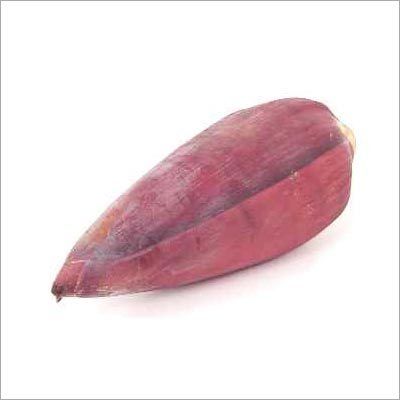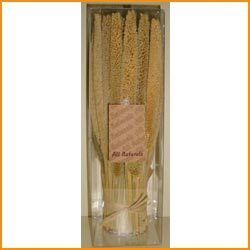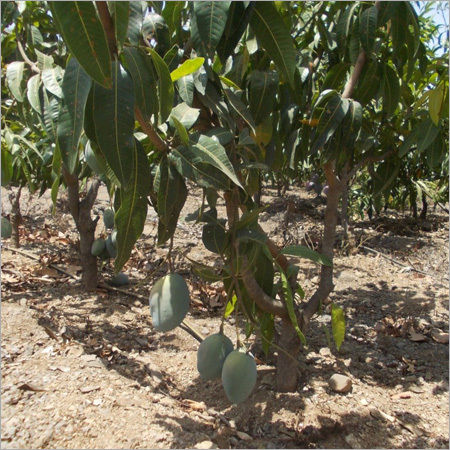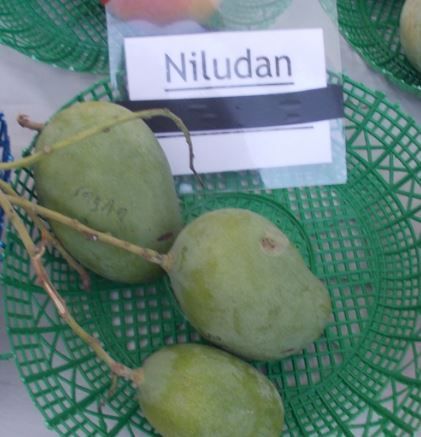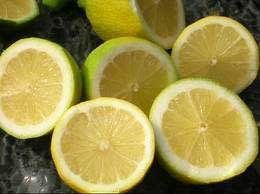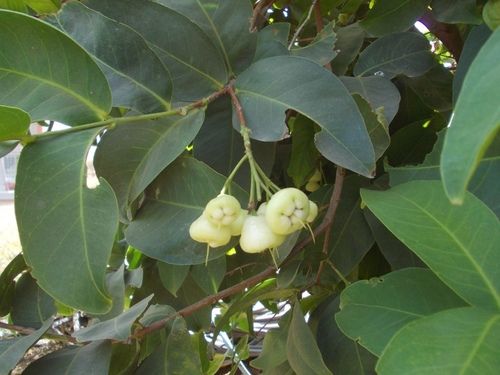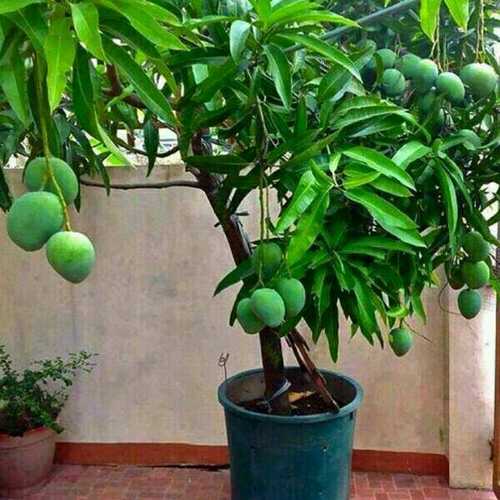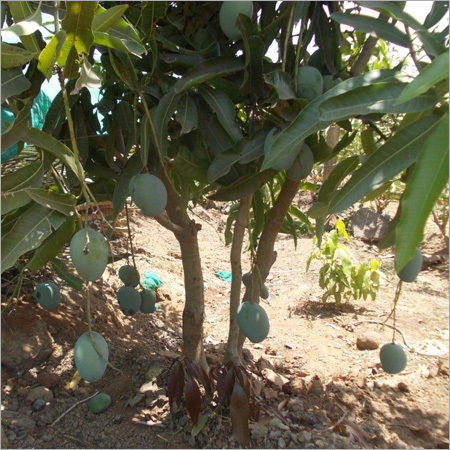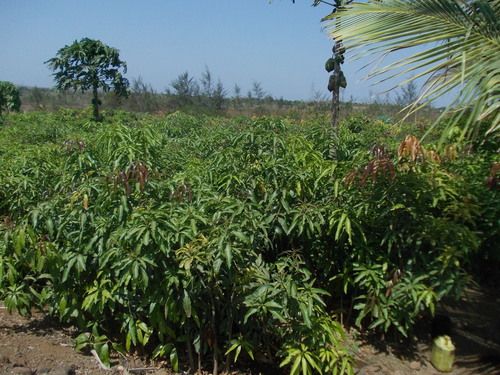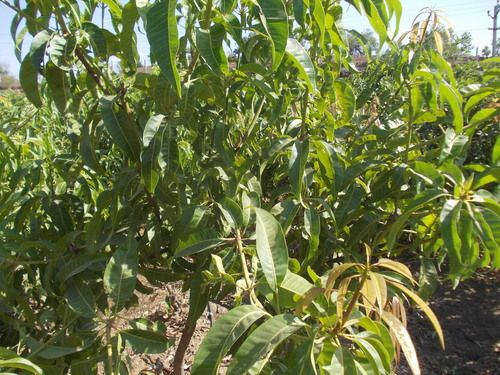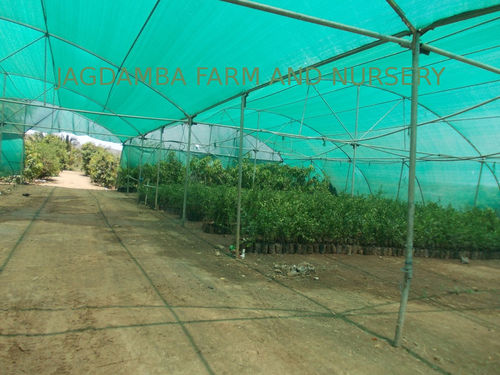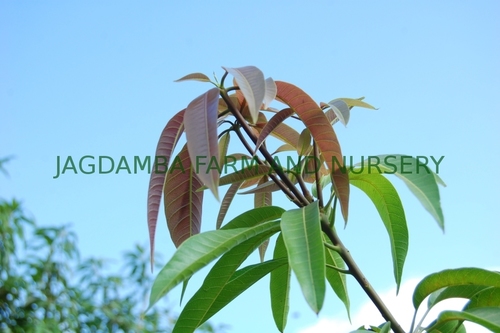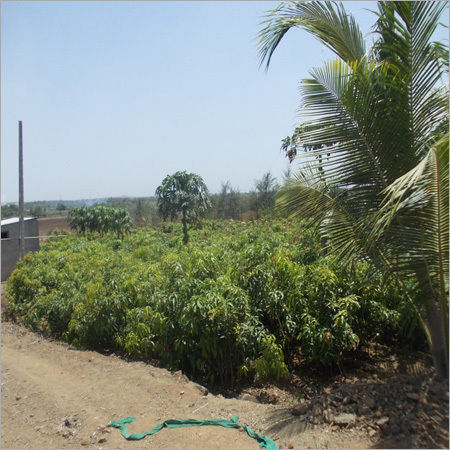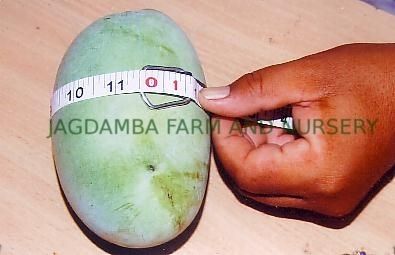
Gir Special Kesar Mango Grafts
Price:
Get Latest Price
In Stock
Product Specifications
| Plant Height | 1-2m |
| Fruit Size | 10-12cm |
| Fruit Weight | 300-500g |
| Planting Season | Rainy |
| Soil Type | Well-drained |
| Maturity | 1 Year |
| Grafts | Kesar Mango |
| Features | High Yield, Superior Taste, Disease Resistant, Easy to Grow, Fast Growth |
Product Overview
Key Features
Gir Special Kesar Mango Grafts
Preparation of pit
Before pit making, the marking is taken place. The pits of 90 x 90 x 90 cm are usually dug out during summer months. While digging, it is necessary to keep the topsoil and the sub soil separately in two heaps near each pit for about 2 to 4 weeks. This helps in exposing harmful soil organisms to weathering agencies, providing better aeration in the future rooting zone and in making provision for the growth for the nutritional requirements for the healthy development of the plants. After hitting the soil as well as pit, the media is prepared with incorporating soil, sand and FYM as per requirement and type of the soil. If soil is with poor drainage capacity, sand is mixed. Any soil pesticides should be incorporate in soil. The media like well decomposed FYM or any organic matter should be incorporate separately in heap of top soil and sub soil. Than the pit is filled with media. The top soil mixture should be filled first at bottom of the pit than sub soil mixture. After first rainfall, the media filled in pit is settled.
Planting and care after planning
Planting is done during the rainy season when the soil in the pits has already settled. While planting, one should be careful that earth ball does not break and graft union remains well above the ground level. The planting should preferably be done during cloudy weather and in the evening. The plants should be irrigated immediately after planting. The planting should be protected against low temperature injury by (i) Covering plants with some sort of cover, leaving the eastern side open for entrance of light. (ii) Building up slow fire, which emit smoke (iii) Applying flood irrigation may also be essential to ward off the ill effects of frost. The planting should be on S-W direction. i.e. The scion part of the graft union should be face the S-W direction. So the joint of the graft is protected form the jerk of the wind during high wind velocity. The wind breaks or shelter belts should also be prepared mostly in S-W direction which gives protection against hot & salty wind in arid, semi aid and coastal belts. Plant should also covered by artificial fencing of gunny bag or polythene sheet or natural covering by growing of sun savory around the plant to protect the plant against S-W wind as well as to crate the optimum micro climate. Give support to the plant by wooden stick, if require. Use natural mulching for retaining the moisture in the soil. Take care to remove the new shoots on root stock below the graft union regularly. Check the growth of root stock above graft union, after complete establishment of the graft. Plant protection measures particularly against sucking pest and termite. Spray blue copper or carbendezim (Bavistin) @ 20-25 g per 10 lit. of water against fungal diseases of plants. Spray Endosulphan or clorpyriphos or Imdiachlopride or any other pesticides effective against sucking pests during new vegetative flush in grafts
Conversion of Hectare
Bigha = 16 Guntha
2.5 Bigha = 1 Acre
6.25 Bigha = 1 Hectare
10 x 20 = 87 Tree
15 x 20 = 58 Tree
20 x 20 = 43 Tree
25 x 25 = 27 Tree
33 x 33 = 16 Tree
Wind breaks or shelter belts..
The concept of establishment of wind breaks or shelter belt is nothing but a live hedge responsible for overcoming or reducing the wind velocity and ultimately reduces the concentration of salts through air flush in orchards. The species selected for wind breaks should be with fruit yield. So the fruit crops like Jamun, Acid lime, Gunda, Ashoka, White chandan, Coconut etc shold be selected for shelter belts
Yield of our Jamnbo kesar mango ...
It true that there is more demand and more price of bigger sized fruits as compared to medium or small sized fruits. Jumbo Super Kesar fruit is Jambo sized fruit in real. So the yield is naturally increased as compared to normal kesar. Normally, it produces 25-30 ton per hectare from 6th year of planting. The cultivation of Jumbo Super Kesar Mango is highly profitable with earning foreign exchange. It also improves environment and rainfall systems of the area.
Last but not least ... Self observation to your orchard
2. During our visit and observation to the orchard, we should keep the positive mind which is directly affected positively by the sensor of Mango resulted in good yield as well as our good health.
3. We should have to care to the individual tree as we are also taking care to the human being. It has very good and positive effect and it feels the better.
4. So do the hard work through physical as well as mental through regular visit to the orchard.
Company Details
Focusing on a customer-centric approach, JAGDAMBA FARM AND NURSERY has a pan-India presence and caters to a huge consumer base throughout the country. Buy Plant, Flowers & Dried Flowers in bulk from JAGDAMBA FARM AND NURSERY at Trade India quality-assured products.
Business Type
Exporter, Manufacturer, Supplier
Employee Count
30
Establishment
2002
Related Products
More Product From This seller
Seller Details
Visavadar, Gujarat
Md
Mr. Naresh Boghara
Address
AT-DEDAKIYALI, TAL- MENDARADA, DIS- JUNAGADH, Visavadar, Gujarat, 362120, India
Plant, Flowers & Dried Flowers in Visavadar
Report incorrect details






